All posts by Harrison Cummins
Filters
Final Evaluation
- Photo book – Over The Fence
For the majority of my coursework, I focused primarily on my first photo book by capturing and sifting through 1600 images, editing the ones I thought best-suited my project and then becoming accustom to the online book publication ‘Blurb’. In retrospect, I struggled with this particular project as I found the content rather intrusive and the self-reflection into my own feelings was an intrinsic exposure I had never experienced before. However, I am glad I studied what I did as I believe I have become more self-aware as well as starting to make a conscious effort into helping my step-brother through the process I had once undergone. I steered my attention to my socio-economic surroundings in my early life by capturing Noah in his current environment, giving the perception Noah is a reincarnation of my younger self. When I began the project, my teacher had requested I focused on something thats personal with depth and meaning, and when it came to the planning stages of my project, I realized I was drawn to capturing former situations which I experienced. By focusing on this subject, I believe I created a unique narrative which focuses on what I’m looking at, but the subject of each image I am looking at is reflecting back at me and revealing small but significant elements of my childhood story. Overall, I didn’t enjoy photographing my photography coursework as it invaded my personal emotions and feelings, but in retrospect, I believe that’s what elements are photography about; pushing yourself to identify or explore minor subjects in a unique perception.
- Photo presentation
To compliment my photo book, I produced a collage inspired piece which entailed a layered selection of my chosen images from the project. I wanted to give a physical memento of my project using the same images as support for the main piece.
Overall, I am impressed with both my photo book and photo presentation as they compliment and coincide with each other very well.
Book Analogy
The work of Doug DuBois has had huge impact upon my work as it influenced my photography style, although, my work did not have as much narrative from strangers who live on the estates. DuBois often takes a step back in his work, giving a wider interpretation of the scenario he is capturing, a factor I have attempted to convey also as it gives the audience a broader interpretation.
A factor I have tried to understand is, other than humanising and promoting the lives of those from unfortunate backgrounds, what is DuBois’s intentions? In an interview with LensCulture, DuBois describes how his compelling images are “electrifying and inspiring” as he sheds light upon the “raw truth” of those living in the lower class. What I personally find the most interesting and unique about the American photographer’s work is the mere fact that he creates and develops upon this relationship with his subjects. When in discussion with LensCulture, DuBois reveals how this spontaneous, unplanned project last five years as he made several friends and relationships whilst using the tableaux technique of photographs. Rather than focus or solely source a brief interview, I decided to proceed further afield and onto YouTube as I wanted to discover DuBois discussing his work himself, in the flesh. I stumbled upon this low key video of DuBois hosting a lecture upon My Last Day At Seventeen and All the Days and Nights, where he discusses the stories of some selected photographs from his imagery expedition in detail as well as the concept behind his photo-books. DuBois begins to reveal insider information upon My Last Day at Seventeen in the video at around 19:12 as he discusses his Irish encounters and experiences whilst photographing Russell Heights.
https://www.lensculture.com/articles/doug-dubois-my-last-day-at-seventeen
https://www.youtube.com/watch?v=Frnai1BavOk
Artist Study: Robert Clayton
Robert Clayton is an English photographer who is renown for his sole work on Estate from Lion Farm Estate in 1991. The estate near Birmingham was scheduled for a re-vamp when Clayton began to take photographs with the content of these images varying between portraits of residence or distant landscapes to show the sheer size of the complex. The renovation of the estate would consequent in the moving of residents, causing upset to the occupants of the estate, which is fundamentally what Clayton is capturing, along with the outdated accommodation that has become accustom to those who live there.
I selected Robert Clayton as my artist inspiration for his unique lens and investigation into lower-class British life, giving a balanced perception and not biased. He creates images which are both aesthetically pleasing and have covert meanings as the documentary approach exposes a way of life which not many are aware of. The work of Clayton coincides with my concept as he documents the lower social orders and their struggle of being rehoused, but by producing this book he would have illuminated the struggles the lower class undergo within society, hopefully reducing the stigma against them.

Robert Clayton appears to use a more stand-back, social documentary approach to his photography as there is a substantial distance between the photographer and the two main subjects. In the foreground of the image are the two main subjects which appears to be a mother and her young daughter, who presumably live on the estate, which fundamentally highlights the importance this complex provides. As well as the clothes, there are indications of the era that photograph was captured in as the small car in the background has an 80s-esque representation and the dominant telephone poles. Another factor to consider is the over-casting shadow which shades the majority of the right-hand side of them image, perhaps reflecting the government’s destructive yet constructive intervention with these people’s lives.
Artist Study: Doug DuBois
Following the exploration of Doug DuBois’s My Last Day At Seventeen which was scattered in my classroom, I decided to delve into learning more about DuBois as his work upon Russell Heights was very interesting and relevant to what I was trying to portray as a seventeen year old photography student.

Doug DuBois is a middle-aged American photographer from a middle-class background, making him some what of an ‘outsider’ to the life of an Irish council estate. Having already looked at one book, I decided to explore other pieces of work DuBois has produced, for instance, All the Days and the Nights, a British journal which examined family relations under stress. DuBois exploits his position as an outsider to photograph and capture alternative scenes which have links to what I am looking to portray.

DuBois’s style is heavily tableaux, particularly in My Last Day At Seventeen as the subjects he looks to capture are sensitive for some families or groups of people, so by grasping the co-operation of the subjects demonstrates he is not being disrespectful, a matter which takes time, effort and patience.
IMAGE ANALYSIS

Technically, the format of the image is slightly more rectangle than square in order to coincide with the sizing of the window pane which gives a visual on what happens beyond what we assume to be this young man’s home. The window creates the background of the image as it creates a physical yet transparent barrier between the home and the estate which could occur deliberately by the photographer as he looks to examine and analyse individuals alone away from their neighbors or peers. The limited view we have of the home reveals it is lived in as washing is hanging from the curtain pole as well as the tow mugs of tea, with one potentially being for DuBois himself as he, as he explained in an interview with Lens Culture, created good friendships and relationships with those who lived in Russell Heights. The image produced definitely coincides with the rule of thirds as the fundamental subject in question is just slightly off center piece with a translucent vision of the estate which is the main subject of the book, suggesting the young man is very much a part of the estate and community it has to offer. As we know, DuBois uses tableaux techniques in order to capture his photographs, potentially meaning he has positioned the subject in this fashion to demonstrate a level of trouble or stress due to what happens in and around the estate. There is also a degree of irony as the young man’s body language connotes closure as he is keeping his arms close to his chess, however, in the background there is the curtains which are spread open, meaning the estate is always a welcoming and accepting place to live despite your troubles. As far as DuBois is concerned this allegation is true as his five-year project was greeted well with the occupants of the estate. The book was published in 2015 yet the curtains and other interior attributes appear quite dated, giving a crucial insight into the socio-economic status of the estate. However, despite this factor, DuBois captures vibrant and illuminating colours which creates a positive atmosphere despite the body language and extensive analysis.
Book Analogy
Following hours of assembling my book, I have finally pieced together a formula I think is suitable. I have organised my photographs and essay in the following fashion…
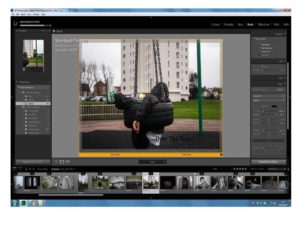



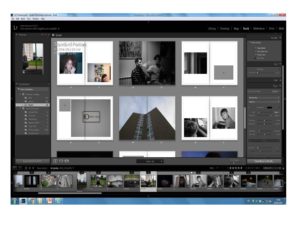


Book Development
I have used Adobe Lightroom in order to create my photo book over the past few days, experimenting with images and layouts. I have selected around fifty images from about twelve-hundred images, meaning I have spent a lot of time deciding what features and what doesn’t, making some very painful cuts along the way.

A feature I think works with my images is making specific images double paged spreads as, particularly with the imagery of over-arching buildings, they create this daunting tower effect or can portray the vast, suburban landscape. I have opted to use Standard Portrait for the size of the book as it fits my images the best on the page and Premium Lustre for the page material itself as it gives a tame lacquered look. I have considered my options further by assessing other books with the same qualities to ensure it is the correct decision.
My Heritage // Step-Brother
As I have previously explained, in 2012, I was introduced to a boy who would soon become my step-brother. Due to unforeseen circumstances, I no longer see Noah and very much doubt I will in the near future, causing me to cut short my exploration of his condition. Noah suffers from ADHD just as I did as a kid, however, Noah suffers in a different way that I did as we suspect there is an element of Asperger or autism combined with it. Crucially, I photographed Noah with the intention that he reflected me for when I was his age as we shared similar qualities, the more obvious being male, however, covertly, both our parents are separated, we both suffered from ADHD and we both had a parent involved in relationship which cared for us. Noah was almost a reincarnation of me from my younger self, making him a helpful tool for what I was trying to portray.
My aim with this shoot was to capture images of Noah, a physical symbol of a younger me in the kind of surroundings I grew up in and the surroundings he is growing up in now. I want capture images that connote the emotions that I was feeling when I was Noah’s age as I come to terms with difficult childhood.






In this selection of images, I have pictures from our snowboarding trip at Christmas 2017 to France, Le Marais and general ones of Noah from around the house.

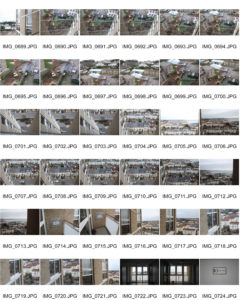





Social Circle
On the subject of describing how it was difficult for children to fit in with ADHD or from disadvantaged backgrounds, I have decided to capture how I have fit in by photographing everything around me. My aim is to capture my friends, their hobbies and some of their homes and how this has made them who they are, just like their influence has changed a part of me in way or another. The idea is by me photographing everybody individually, I hope to grasp this concept of sub narrative, a smaller, less generic and more personal method to depicting a narrative. Overall, after photographing my peers and their typical environments, hopefully their unique lives can be reflective of mine and demonstrate how school can bring and unify a variety of different people.






This shoot is extremely different to my others as I attempted to show my friend’s fashionable side. Ben’s main concern is his appearance and that is why he is “reppin'” his Stone Island jumper and Busy Boi tee-shirt. I tried to convey everybody in a way that I thought reflected them and for me this is Ben’s.

Personally, I couldn’t have captured a more reflective image of Ben in the studio as I did here as in the foreground, we have a teenager in light and focus. However, in the background there is a dominant shadow which cats over Ben and from my own knowledge and relationship with Ben, I know his family life has caused problems for him. These two identities are also examples of his zodiac star sign as a Gemini, with two sides to his personality.





Golf is played by three of my friends and me up at La Moye, a very different environment to the sort of images I usually capture. Stereo-typically, golf is played by the wealthier in society as the equipment and memberships are expensive, however, fortunately for me, I have two exceptionally gifted golfers who receive the membership for a cut price and can bring a friend each. I often tag along. The golf course over looks Saint Ouen’s bay so it was a good time to capture some images with the wintry sun setting at about five o’clock.






My big friendship group of boys finds itself often with a group of girls from JCG, with my girlfriend being a member of this clique. Our weekends are frequently spent in somebody’s house for a civilized “sesh” where we drink and play some sort of board games, probably order a take-away. Here are some images of a night spent at my friend Jay’s.
















My first home visit was Charlie before we went to play golf, waiting for time to go by before we could tee off. I wanted Charlie to relax and feel as though I wasn’t there, or at least there without camera.





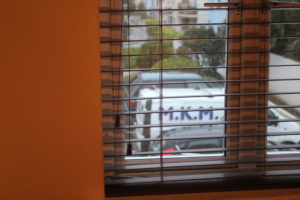


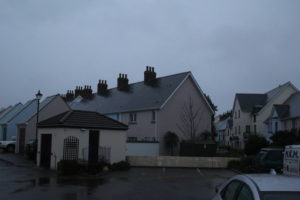
Essay 2
How do photographers Doug DuBois and Robert Clayton represent social divisions in their work?
Society – “the aggregate of people living together in a more or less ordered community.”
Within society, members of the public domain are continually categorized and divided by their characteristics, a feature of a person in order to identify them, which is out of their own control to an extent, for example, their race. Societal politics serves economic categorization among people in order to accommodate for the different classes, altering their contribution to society or providing financial support so nobody is disadvantaged. However, society’s judgement upon receiving government help is generally interpreted sourly, creating an image of these people as inferior to those who work or those who don’t live in council housing. Society’s pretensions are detrimental for those on the receiving end of government provided benefits as it is places them into a social disadvantage in terms of acceptance and equality. Due to my parents being fifteen and seventeen when I was born, financial aid was paramount in our unique situation as both my parents were still in school, one way or another. Both my mother and father have accepted that “the odds were against them” in sculpturing and raising a child to be a good son, successful student and socially inline, meaning, I spent a significant amount of time of my life in the lower sector of society where “irresponsible” accusations commonly fell upon my parents. I have my own shameful experiences of embarrassment as I became more conscious to the fact my parents were young when I joined primary school and that our financial situation or home life was different to others. Although my time in state accommodation was limited, I do have experience and memories of living in social housing but it is more so the fact I was deceitful when people had asked where I lived, often not mentioning that particular area in case I was thought upon or treated in different fashion. The documentation work of Robert Clayton in Estates and Doug DuBois in My Last Day at Seventeen gives a valuable insight into the lower class lives, ranging from characters found within these regions to the buildings in which they live, all staying very loyal to stereotypes. However, what I appreciate the most about these two illuminating photobooks is the beautifying of what we expect to be Western slums, for instance, Doug DuBois’s crisp shots enriches the ugliness of these surroundings, giving a more accepting and warming perception of council housing. My intention with this complementary essay to my book production is test the social stigma I was once a part of in order to demonstrate that human identity and emotion remains despite divisions within society. In my personal investigation, I photographically documented my friends, my family, my girlfriend, my dog, the houses I either live in or visit, and the environments that have made me who I am today and who I am becoming. Having experience of two social classes, I aim to create a bridge between the social divisions in order to show the importance of unification, fundamentally appreciating one another’s differences and allowing equal opportunities despite alternative, inherited socio-economic statuses.

Doug DuBois is an American photographer based in New York who was sent to Ireland via invitation to attend Sirius Arts Centre in Cobh. In an interview with Lens Culture, Doug DuBois revealed how he had almost turned down the opportunity which actually became a five year project, his second most prolific to date. Frustrated by a lack of progress, DuBois requested to his two students they take him back to where they live for some photographic inspiration which is when the photographer first arrived at Russell Heights, the council estate photographed within the book. Following on from looking around and getting a feel for the surroundings, Kevin (a student of DuBois’s), showed DuBois his house where he “made a photograph of Roisin in her bedroom and realized almost immediately that this was his “entrée into a compelling and complex corner of Irish life”. In terms of provenance, I personally think it is refreshing and fair photography for DuBois, a member of the middle-class, to capture life upon Russell Heights as he is not attempting to show some sort of savagery among the lower classes that an upper class documenter would have portrayed, or promote life in these regions like the lower class would have. DuBois has initially entered an unknown area, meaning he would have documented what he saw using a technique I call the “transparent lens”, meaning you directly capture what you see. Although, DuBois confesses “only a handful of photographs in the book … aren’t posed”, reinforcing this sense of tableaux, and as consequence, the meaning behind each image remains the same and as yet there is a lack of imitation, which can detected in Steve McCurry’s The Imperial Way (1985). Despite being an individual council estate, the images portrayed stay loyal to a council estate’s stereotypes with young girls in short, semi-revealing clothing, unorthodox graffiti and hooded, smoking teenagers.

Crucially, the work of Doug DuBois is a valuable insight into the life within an Irish council estate in Cork as we, the audience, are exposed to a unique sub narrative which the majority of the world would not experience. Dubois’s photographic work upon Russell Heights in My Last Day at Seventeen (2015) breaks social boundaries as an American photographer from a middle-class background can stroll into an Irish council estate and request their photographic co-operation over the course of five years, demonstrating that this anti-socialable behaviour that is commonly recognised or associated with council estates is actually down to the role of the individual, rather than the collective. Due to relativity of DuBois’s piece, his sub narrative becomes reflective of other council estates and therefore an example of the grand narrative’ almost becoming a social protest against society’s pretensions. The mere fact that a stranger with a camera, an intrusive tool of documentation, can be welcomed onto a council estate indicates to me that the lower class lack guidance and opportunities as when instructed, teenagers we’d expect to disobey DuBois’s wishes, follow what he asks. As DuBois’s heritage does not stem from an Irish lower-class, we’d expect that DuBois would adopt a voyeuristic or objectifying approach to his photobook, acting as an “outside” to Russell Heights. In contrast, DuBois embraces the qualities Abigail Solomon-Godeau deems as “inside”, for example, “trusting” and “engaged” which he reinforces by clarifying he made a “handful” of “friends” during his time documenting the estate. DuBois’s attitude and accepting mind-set is a factor or trait the majority of the population need to adopt, as when the photographer gave the residents of Russell Heights a polite and respectable response, there was clear unity, something general society lacks.
In the same spontaneous fashion that DuBois discovered his own photography project, I discovered mine. The art of communication enlightened me as one night in my kitchen, I informed my mother of how I was struggling to meet deadlines with my photography course as I could not find a sufficient photography topic to develop and progress with. As a result of long conversation and me explaining a vague outline of the photography course, my mother concluded something “personal, something that shows who you were and who you have become”. I conjured up numerous plans and envisioned a multitude of photo-shoots in my head, ‘picturing him there and that there with that in the background’. Finally, I thought photographing everything that I felt was meaningful around me would give a clear perception and image of me and my journey of endless self-acknowledgment, almost like how the sub narratives of my friends, my step-brother and my girlfriend create my own grand narrative, yet my narrative is a sub narrative. Admittedly, I spent a lot of time photographing my social milieu, carrying my camera around with me on nights out, taking it to people’s houses with me and even following my friend’s playing golf, however, when it came to narrowing my vast selection of images down, they always seemed to fit the same sort of category. Problems inherent with social housing and stigmas our society possess always cropped up, perhaps a mental reference to the issues in my own life I have ignored and been embarrassed of. The images I had taken under this bracket seemed to be distant and taken from long-range, meaning the methodology of how I captured these images were reflective of how I dealt with these difficulties. Other underlying issues were also incorporated, for example, my father’s departure when I was aged three meant I no longer lived with him and as a boy; my dad was my hero so it was rather detrimental to not have such a paramount figure always present in my life. Thus, there were a lot of close-up images in his bedroom to establish this sense of my father’s absence and closeness that I believed I craved as a child, as well as any suggestion of our unification or instances of me present in his life.
Robert Clayton is a British photographer whose vernacular work rarely drifts beyond his 1991 production of Estates, a photographic documentary based upon the life in a particular council estate and how the setting is disturbed by the government’s decision to renovate the properties. The analysis of the Lion Farm Estate shows the government’s power and demonstrates how it trivialises the tenants of the high rises as Clayton captured Lion Farm on the eve of its calamitous invasion which would result in the partial destruction of the estate. In this scenario, the term “estate” is personified to be a living entity; it is the home to a multitude of tenants, a place of joy and an example of a certain time period. Within my own work, I aim to elevate the settings in question in order to show how these buildings, despite their negative connotations, can be important for members of society and contain their own account of events with every tenant having a different story to the next. Fundamentally, Clayton’s work lacks colour and is rich in vision as it portrays a setting that is worn and far-from perfect, yet still embraced by its residents, giving significant importance to the ugly. Clayton tests society’s questions of the aesthetics of the estate and its occupants civility as they are questioned themselves as he aspires to humanise the tenants and the live they lead. The estate is in the Black Country region, one of the most populated areas in Britain yet Robert Clayton has the ability to make it feel segregated and secluded to the rest of the country, even deserted to desolation. There are two reasons for this; the first being to depict the independence of the tenants that occupy the buildings, attempting to demonstrate that they don’t need to government’s aid. The second interpretation is that the government have deliberately isolated the estate, leaving the tenants who quite clearly need help, whether this personal or financial, alone. This factor coincides with my work and reinforces why I chose to analyse this book as I believe the governmental upper class is not too concerned with the lower class’s welfare and their alleged system which is supposed to improve lower class lives lacks a sense of personal. As I have eluded with analysis of Doug DuBois’s My Last Day At Seventeen, the people of these estates need more than a roof and financial aid, with a genuine care for their future crucial for social development.

The problems with government handling of the lower class is not a recent affair as Charles Dickens, a renown social critic discredits social policy on attaining information regarding the less fortunate and how they deal with this data. In his 1854 production of Hard Times, Dickens explains how the government is obsessed with “fact” and how they use “tabular statements” to deal with social ills, yet these methods are quixotic and lack personality. The government’s prevention to intervene and aid lower class lives on a personal level means there will always be social injustices in terms of equality as children from lower class backgrounds don’t have the same opportunities as children from the middle and upper classes. In 2018, Professor Green, a UK rapper brought up on a council estate by his grandmother admitted university was never a possibility for him due to his financial circumstances but when offered the chance to go to Saint Paul’s, a highly selective independent school, he knew by the age of eleven that people from his socio-economic background did not attend that school. Green developed upon this by granting the fact there was a stigma for “Working Class White Men” to attend university, clearly distinguishing that there is a social divide in terms of acceptance of the lower class.

Of paramount relevance, I analysed the work of Doug DuBois and Robert Clayton in order to examine how they portray the lives of the lower class against what society’s pretensions are. As stated, there is clear imbalances between the classes and not only in terms of finances as children, that are productions of their class, do not have equal opportunities regardless of their abilities. The leading classes tends to be less accepting of the lower class being successful, however, these photographers crucially question these pretensions and humanise the bottom of society’s pecking order. Throughout my photobook “Over the Fence”, I incorporate characters that represent a low socio-economic status that still achieve in the activities they do and the lives they lead both socially and in terms of sport. My work also includes daunting images of large high-rises to create the perception of the challenges facing thw lower-class, I even revisited where I lived in order to remind myself of my heritage and the difficulties my family faced. When embarking on this photographic expedition, I paid particular attention to detail in a fit of nostalgia as I used this opportunity to heal and accept where I came from; shrugging off any embarrassment I had previously felt. A factor I did not achieve when undergoing the creation of my photobook was a current notion of social protest as I should have used my tableaux orientated skills to enquire with residents of council housing about photographing them and perhaps their homes, much like Doug DuBois did in his My Last Day at Seventeen. Although the images would not have been personal, like the photographs produced in Ray’s a Laugh by Richard Billingham, it would be atmospheric and provide a stronger protest against the detrimental divisions within society.
“Knowledge is power. Information is liberating. Education is the premise of progress, in every society, in every family.” – Kofi Annan
